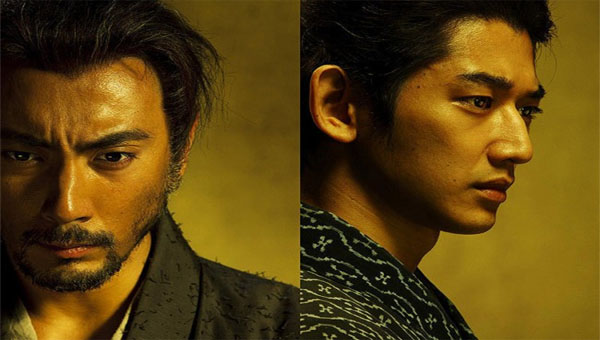The ancient samurai ritual of hara-kiri, also known as seppuku, is a symbolic suicide performed in an attempt to regain honour when all hope is otherwise lost. It is a grisly fate, involving plunging a short sword, known as a tantō into one’s stomach, and slicing left to right. An appointed “attendant” would then finish the job by relieving you of your head. Our story opens in 17th Century Japan, with downcast Kageyu seeking the audience of Lord Li. Kageyu wishes to use Li’s courtyard to perform the ritual, as it is understood that the higher the social status of the location owner, the more honour can be regained.
Lord Li is reticent, as there has been a recent spate of “suicide bluffs”, where a man seeks a lord’s counsel just as Kageyu has, but with no intention of committing suicide. These con artists instead bank on being talked out of it, perhaps being then fed and dressed, offered work. Lord Li goes on to tell Kageyu of what happened to Motome, the last person who tried such a wheeze on him. We flash back two months, and the “real” story begins.
Throughout the film we go back and forth from 1634, back to 1617, and in between. The 1634 story plays out a lot like a courtroom drama, with Kageyu and Lord Li having an epic stare-out in a snowy courtyard, with a rapt audience of assorted samurai. The visits to the past are reminiscent of 2003’s ZATOICHI, with gentle glances round the houses of Japanese history’s Edo period. The characters Motome and his young family are all performed brilliantly, and you quickly feel for their plight, suffering from poverty and joblessness. The flashbacks serve to show how living on the breadline can lead someone to attempt the risky titular suicide bluff.
The only (very minor) flaw in the film is that it was shot in 3D. Now this is not to say that the 3D detracts from the enjoyment of the viewer. Indeed, for the most part, the 3D is not even perceptible, which begs the question of why 3D was used anyway. The title HARA-KIRI 3D suggests there would be blades and blood flying out into the audience, when effectively all the 3D effect does is to push the subtitles a couple of inches off the screen. If and when it finds general release, I hope a 2D alternative is offered, as this is a truly excellent addition to Japanese period drama.



THE BEST FILM IN A DECADE!!!!!!!!!!!!!!!!!!!!
I AGREE..!!.Best in a while,bout time we get. A chance to see magic..it’s tha Mook!